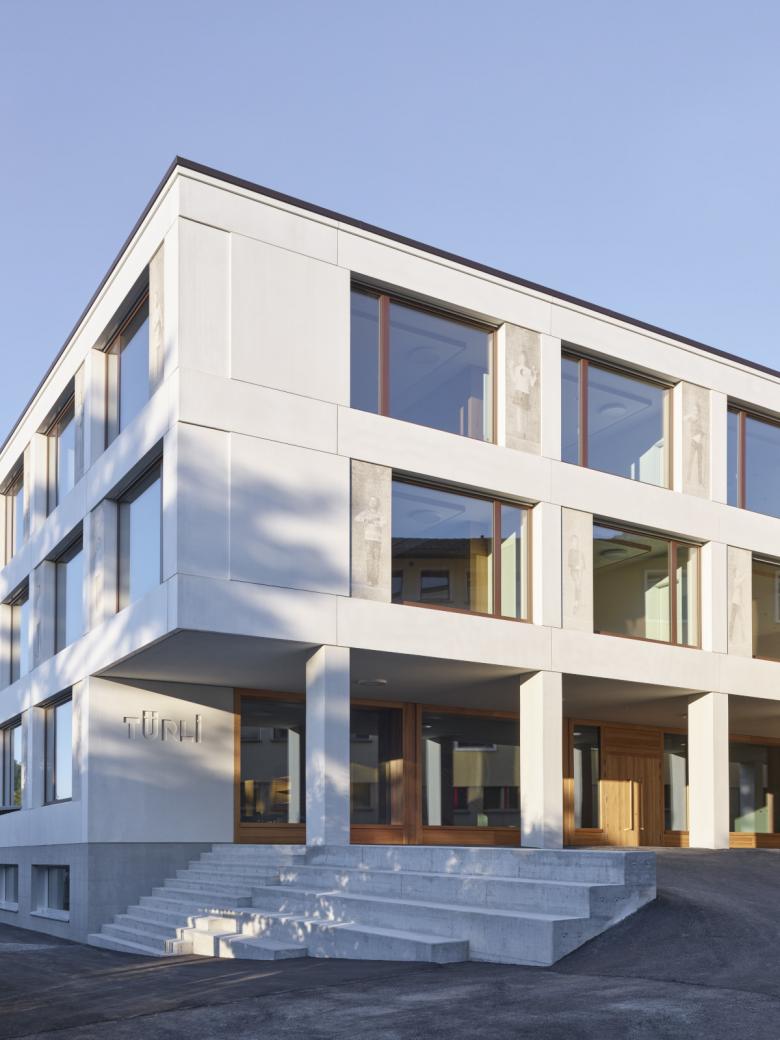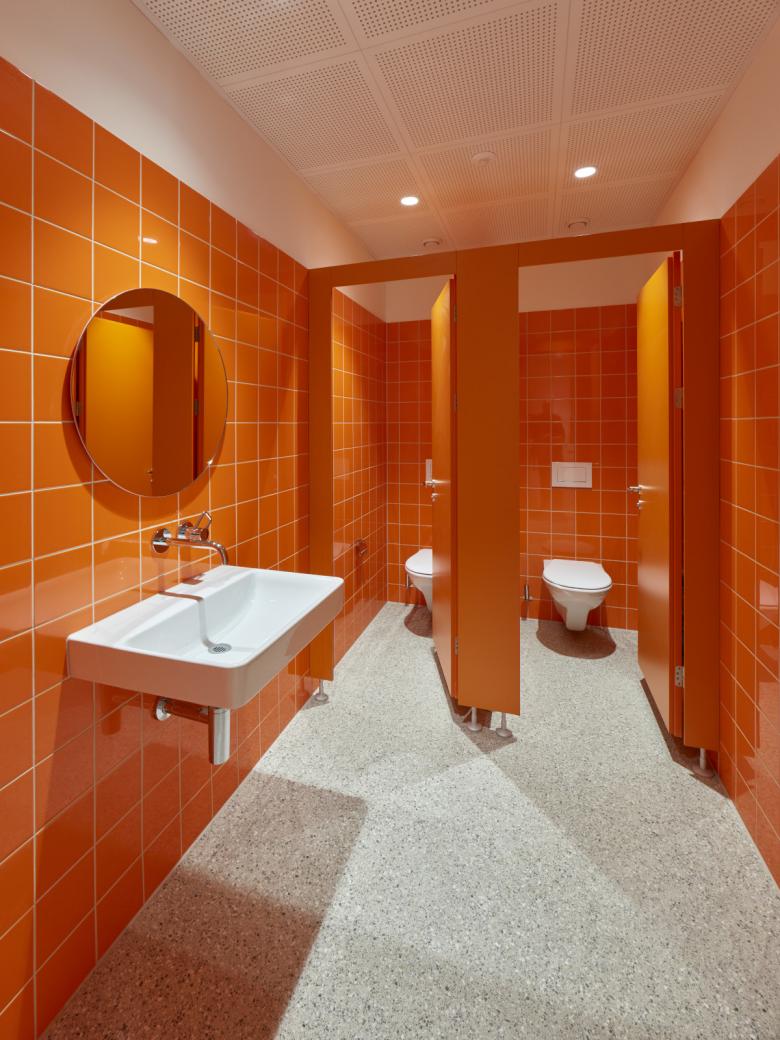School Building Türli
Sachseln, Switzerland
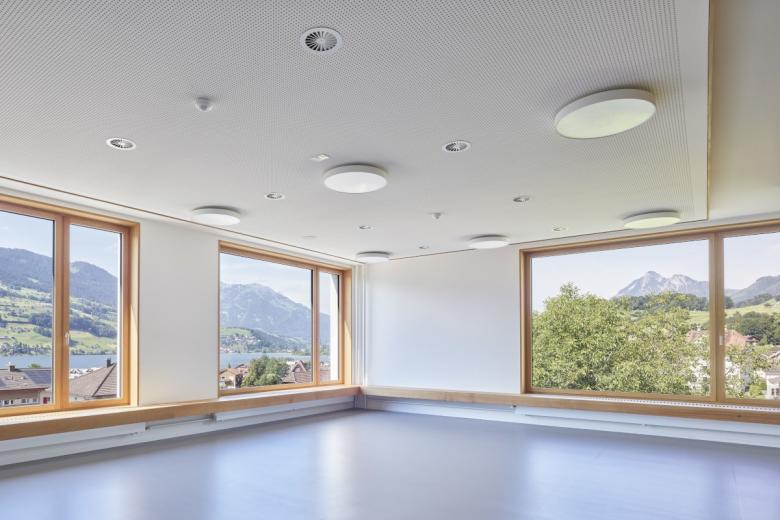
CONCRETCOOL ventilation system from Kiefer in the Türli and Arni school buildings, Switzerland
New learning with a magnificent view and the best ventilation
The small town of Sachseln in Switzerland is located directly on the beautiful Lake Sarnen, just 30 minutes from Lucerne. In this tranquil community with a population of around 5,200, the pupils attend the new primary school with an attached kindergarten with great enthusiasm. Around 17.5 million Swiss francs were invested in the new Türli and Arni school building, and the main focus was on an intelligent, sustainable ventilation system using concrete core activation.
The old Türli school building in Sachseln was built in 1958 - at that time, different building standards and requirements applied to school buildings than today. In the meantime, not only hygienic specifications in the housekeeping areas posed a problem, but also the lack of group rooms for additional or music lessons and the fact that the building was not handicapped-accessible. All in all, the building was in need of renovation and adapting it to today's requirements would have required a great deal of effort, especially since the old building contained asbestos. After a referendum, the municipality therefore decided against renovation and in favour of a new building. In the subsequent architectural competition, the design "Türli und Arni" by Durrer Architekten from Lucerne won. This envisaged two different buildings - a school and a kindergarten building, which were to be built in different stages, so that no temporary facilities were needed. This meant that the new construction of the Türli and Arni school building took place during ongoing school operations. This was a special challenge, especially for the safety precautions for the access and departure of the construction vehicles.
The Türli building is four-storey with a low hipped roof and therefore fits ideally into the existing townscape. On the outside, it looks compact; on the inside, a large light well in the roof provides natural light and the predominantly light wood furnishings make for an open, friendly reception. The new school building has space for 12 classrooms, four group rooms, a music room and a singsaal, a teachers' room, a speech therapy room and rooms for handicrafts as well as adjoining rooms for storage or building services. Above all, the classrooms on the two upper floors with their generous panorama windows and all-round windows are a real highlight for the pupils: they offer a magnificent view of Lake Sarnen or the church and the village square and make the classrooms seem bright and friendly.
The elongated, two-storey Arni building houses five kindergarten rooms and two school kitchens and was built in a second stage after the completion of the Türli. A photovoltaic system is placed on the ridge roofs facing south. Both buildings were constructed in a mixture of skeleton and solid construction, which allows for flexible use of space.
Innovative component activation convinces the architects
During planning, the architects placed great emphasis on a sustainable energy supply in the two buildings. The latest legal energy requirements were met, among other things, by the compact design and the thermal insulation. In addition, triple glazing of the windows and textile awnings provide thermal protection in summer. The solar power from the PV system supplies not only the school buildings but also the gymnasium and the community hall. In addition, the architect Reto Durrer decided on a ventilation system based on concrete core temperature control. For this purpose, cooling pipes made of heat-conducting aluminium were laid in the concrete ceilings on each level during the construction phase. These can then be thought of as a cooling ceiling, with an additional large energy storage volume. This allows the stored heat to be released at a later, more energetically sensible time, for example at night or in the early morning hours. Throughout the day, the heat capacity of the component leads only to a slight increase in room temperature. The energy in the room is then used to reheat the supply air.
The CONCRETCOOL ventilation system was used in the Türli and Arni project. The TGA planning office Berchtold from Sarnen already had positive experience with this system and therefore requested it from the Stuttgart ventilation experts especially for this project. CONCRETCOOL uses free cooling and combines building component activation with the ventilation function. The system has already proven itself for over 20 years and is ideal for new school buildings like this one. Because for concentrated working and learning, and also to avoid possible virus-laden aerosol concentrations, school rooms always need fresh air. The continuous exchange of room air prevents the CO2 content in the room air from rising. Building component activation with air instead of water uses fresh outside air as an energy source. This is available cool and free of charge at temperatures below 12 °C for up to 70 percent of the year. In this way, the rooms are supplied with fresh air and at the same time the indoor air humidity is reduced in summer. During operation of the system in winter, the students produce more heat than escapes through the well-insulated building envelope. The fact that not much heating is required was a decisive argument for the architects in favour of the CONCRETCOOL system.
Simple function - unobtrusive design - high energy savings
The cool outside air, with an optimum supply air volume flow for CONCRETCOOL of 6 to 7.5 m3/hm2 , flows through the cooling tubes inside the concrete ceiling and heats up to almost ceiling temperature. Ribs in the aluminium tubes almost quadruple the internal surface area. This achieves a heat transfer efficiency of 90 percent. The required heat is extracted from the ceiling and leads to simultaneous cooling of the building component. Type GLS 230 ceiling swirl diffusers from Kiefer Klimatechnik then guide the supply air into the rooms. This covers the hygienic fresh air requirement and creates a comfortable room climate. The system achieves an outlet temperature of around 21 °C without any reheater or primary energy. The process is self-regulating and almost fluctuation-free with high temperature stability due to the large storage capacity of the concrete ceilings.
The system does not require additional ventilation pipes: the air ducts are not visible in the room, only the air diffusers are inconspicuously integrated in the concrete ceilings. This means that the architects' aesthetic requirements can also be met: Since the plenum boxes can also be concreted into the ceiling in a watertight design, smooth concrete ceilings are possible throughout, for example.
Art on the building
In the summer of 2020, the Türli school building could be ceremoniously opened, and in the summer of 2021, the Arni as well - one year earlier than planned and even with slightly lower total costs than originally envisaged. From the outside front, 66 portraits look down onto the schoolyard. The artist Christian Kathriner from Sarner first photographed children from the kindergarten and the school who had been drawn at random and then printed these portraits in different shades of grey on the concrete façade using a special process. In this way, they remain immortalised as contemporary witnesses for the future. The future was also taken into account in the planning: should an extension be necessary later, the Türli school building can be added to or the Arni kindergarten can be extended.
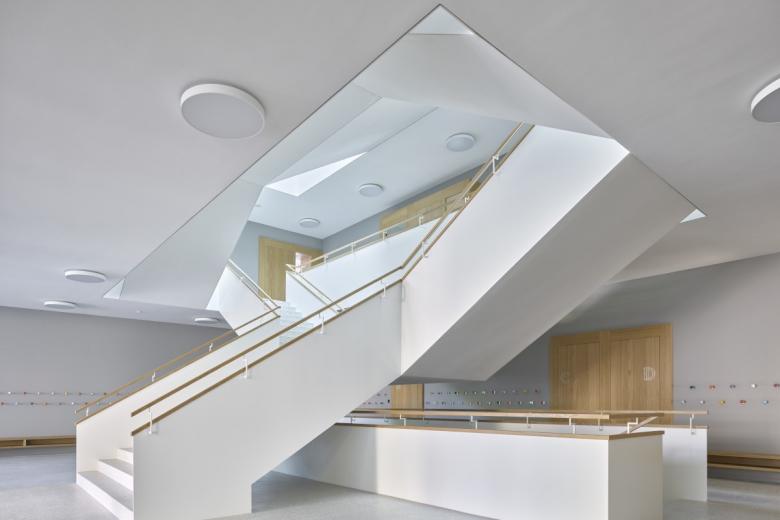
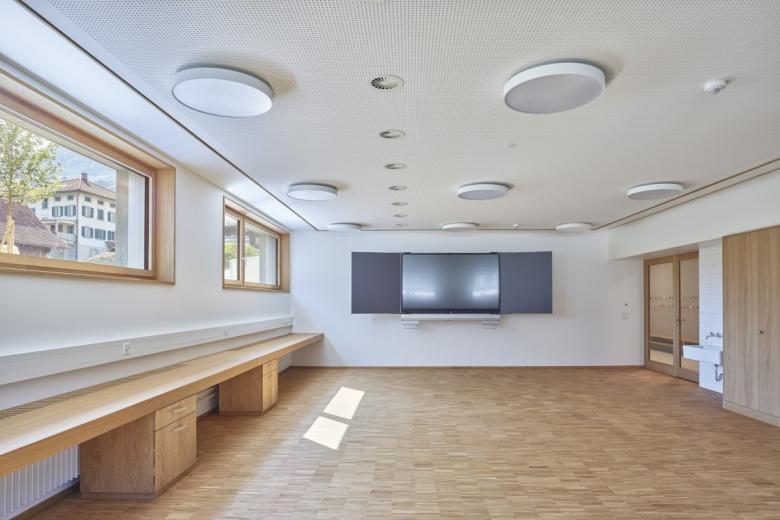
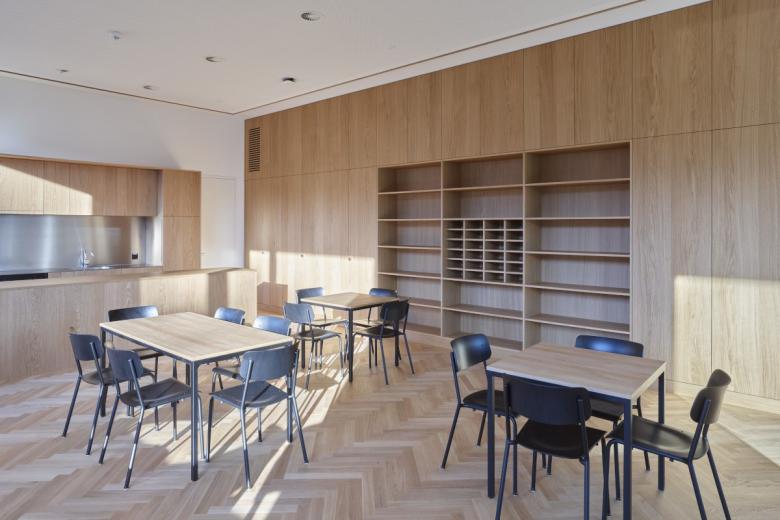
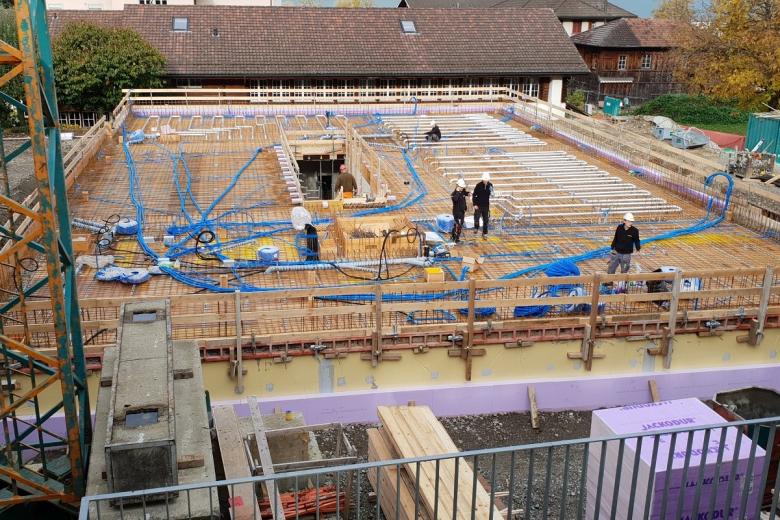
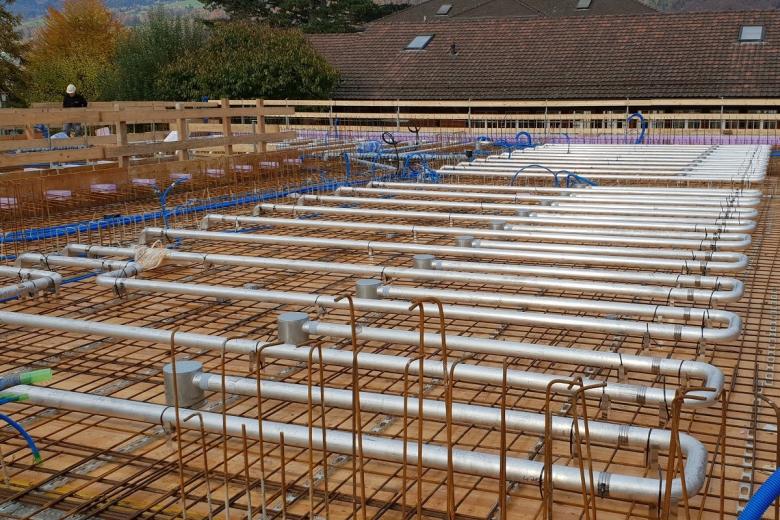
- Manufacturers
- Kiefer Klimatechnik GmbH
- Year
- 2021
- Client
- Inhabitants' municipality of Sachseln Switzerland
- Team
- Durrer Architekten Lucerne Switzerland, Ingenieurbüro P. Berchtold Sarnen Switzerland
